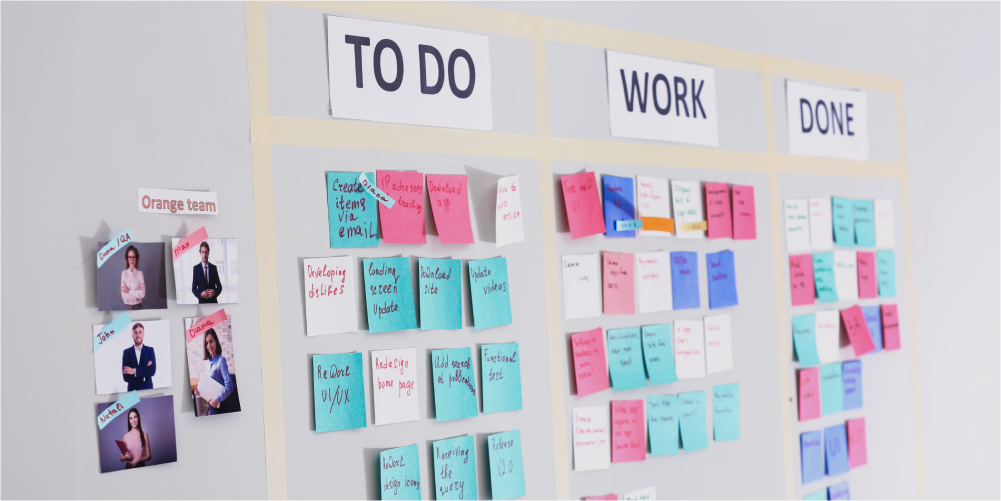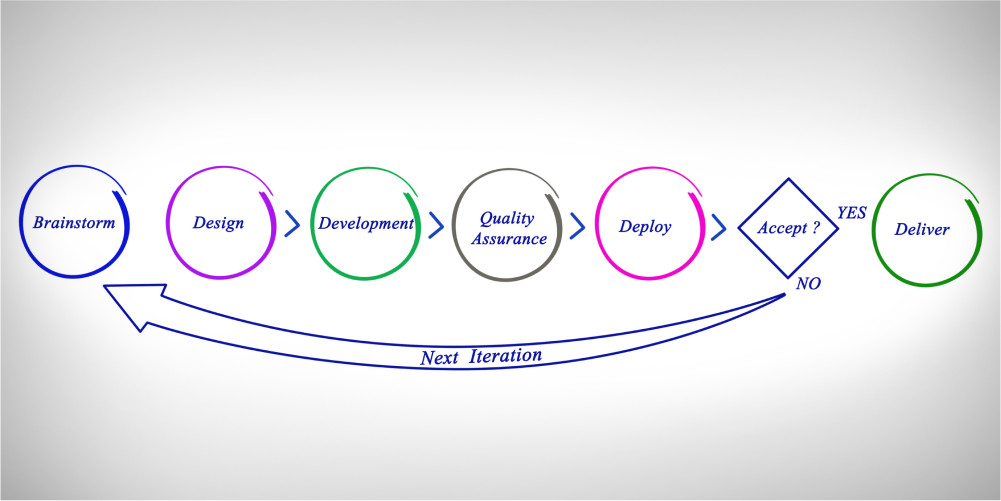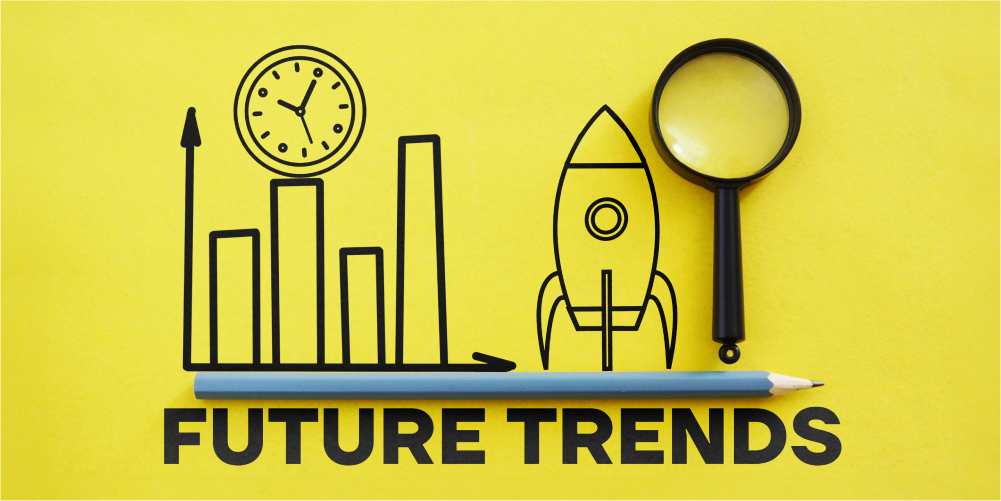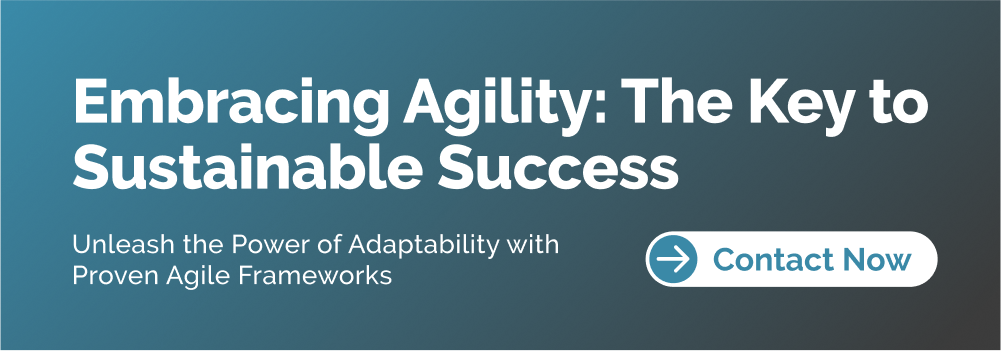Software Development, zBlog
Agile Frameworks: Unleashing the Power of Adaptability in Software Development
Team Trantor | Updated: May 20, 2024
In the ever-evolving landscape of software development, the need for agility, responsiveness, and adaptability has never been more pronounced. Traditional waterfall methodologies, which rely on rigid, sequential processes, often struggle to keep pace with the dynamic nature of modern projects and the rapidly changing market demands. Enter agile frameworks, a revolutionary approach that has transformed the way software is conceived, developed, and delivered.
Agile methodologies, at their core, embrace the principles of iterative and incremental development, continuous collaboration, and rapid adaptation to change. By fostering a culture of transparency, frequent feedback loops, and cross-functional teamwork, agile frameworks empower organizations to respond swiftly to shifting requirements, capitalize on emerging opportunities, and deliver high-quality software products that align with customer needs.
The Agile Manifesto: A Beacon of Transformation

The birth of the agile movement can be traced back to the Agile Manifesto, a seminal document crafted in 2001 by a group of forward-thinking software professionals. This manifesto outlined four core values that have since become the guiding principles for agile methodologies:
- Individuals and interactions over processes and tools
- Working software over comprehensive documentation
- Customer collaboration over contract negotiation
- Responding to change by following a plan
These values challenged the traditional, plan-driven approaches to software development and paved the way for a more adaptive, customer-centric, and iterative mindset. By prioritizing collaboration, working software, and the ability to embrace change, the Agile Manifesto laid the foundation for a paradigm shift that would transform the software industry.
Scrum: The Flagship of Agile Frameworks

Among the various agile frameworks that have emerged, Scrum stands out as the most widely adopted and recognized methodology. Scrum offers a structured yet flexible approach to project management, emphasizing cross-functional teams, time-boxed iterations called Sprints, and continuous improvement through regular retrospectives.
At the heart of Scrum lies the Scrum Team, comprised of a Product Owner, Scrum Master, and Development Team. The Product Owner is responsible for defining and prioritizing the product backlog, ensuring that the team is working on the most valuable features. The Scrum Master acts as a facilitator, removing obstacles and fostering an environment conducive to effective collaboration and self-organization within the team.
The Development Team, a cross-functional group of professionals, is tasked with delivering potentially shippable increments of the product at the end of each Sprint. This iterative cycle promotes regular feedback, adaptation, and continuous improvement, allowing teams to respond rapidly to changing requirements and market dynamics.
Kanban: Embracing Continuous Flow and Efficiency

While Scrum focuses on time-boxed iterations, Kanban takes a different approach, emphasizing the continuous flow of work and limiting work in progress (WIP) to optimize efficiency and reduce bottlenecks. Originating from the Toyota Production System and the concept of “just-in-time” manufacturing, Kanban has gained widespread popularity in the software development world.
At its core, Kanban relies on a visual representation of the workflow, typically a Kanban board, which provides transparency into the different stages of the development process. Work items are visualized as cards that flow through the board, allowing teams to identify bottlenecks, monitor progress, and continuously improve their processes.
Kanban encourages a pull-based system, where teams pull new work items only when capacity becomes available, preventing overloading and ensuring a smooth, continuous flow of value delivery. This approach promotes a culture of continuous improvement, known as Kaizen, where teams continuously identify and eliminate waste, streamlining their processes for optimal efficiency.
Lean Software Development: Maximizing Value and Minimizing Waste

Closely related to the principles of Kanban is the philosophy of Lean Software Development, which draws inspiration from the lean manufacturing principles pioneered by Toyota. Lean Software Development focuses on maximizing value delivery while minimizing waste, embracing principles such as eliminating non-value-adding activities, amplifying learning, and fostering a culture of continuous improvement.
One of the core practices of Lean Software Development is the concept of “building quality in,” which emphasizes the importance of integrating quality assurance throughout the entire development lifecycle, rather than treating it as a separate, isolated phase. This approach promotes early and continuous testing, enabling teams to identify and address defects as they arise, reducing the cost and effort associated with fixing issues later in the development cycle.
Extreme Programming (XP): Emphasizing Technical Excellence and Collaboration

Extreme Programming (XP) is another influential agile framework that places a strong emphasis on technical excellence, continuous integration, and close collaboration between developers and customers. XP introduces a set of core practices, such as pair programming, test-driven development (TDD), continuous integration, and collective code ownership, which foster a high-quality codebase, effective knowledge sharing, and a sustainable development pace.
Pair programming, a central practice of XP, involves two developers working collaboratively on a single workstation, continuously reviewing and refactoring code. This approach not only enhances code quality but also promotes knowledge sharing, improved communication, and increased team cohesion.
Test-driven development (TDD), another key XP practice, involves writing automated tests before writing the production code. This approach ensures that code is developed in a testable and modular manner, promoting a robust and maintainable codebase while providing a safety net for refactoring and future enhancements.
Scaling Agile: Frameworks for Enterprise-Level Agility

While agile frameworks like Scrum, Kanban, and XP excel in small to medium-sized projects, scaling agile practices to large, complex projects with multiple teams and stakeholders poses unique challenges. To address these challenges, various scaling frameworks have emerged, such as Scaled Agile Framework (SAFe), Large-Scale Scrum (LeSS), and Disciplined Agile (DA).
The Scaled Agile Framework (SAFe) provides a comprehensive and structured approach to scaling agile practices across an entire organization. SAFe introduces additional roles, ceremonies, and artifacts to coordinate and align the work of multiple Agile Release Trains (ARTs), each consisting of multiple Agile teams working on a specific solution or value stream.
Large-scale Scrum (LeSS) takes a more minimalistic approach, extending the principles and practices of Scrum to large-scale product development with multiple teams. LeSS emphasizes simplicity, transparency, and a focus on delivering a potentially shippable product increment at the end of each Sprint, regardless of the number of teams involved.
Disciplined Agile (DA), on the other hand, offers a more flexible and context-driven approach to scaling agile practices. DA recognizes that every organization is unique and advocates tailoring agile practices to the specific needs and constraints of the project, team, and organization.
Embracing Agile Mindset and Culture

While agile frameworks provide valuable structures, practices, and guidelines, their true power lies in the cultivation of an agile mindset and culture within an organization. Successful agile adoption requires a shift in thinking, embracing values such as transparency, collaboration, continuous improvement, and a willingness to adapt to change.
Building an agile culture involves fostering an environment of trust, empowerment, and shared responsibility, where teams are given the autonomy to self-organize, make decisions, and take ownership of their work. It also requires a strong commitment from leadership to support and enable the transformation, providing the necessary resources, training, and coaching to ensure a smooth transition.
Continuously Improving and Evolving
The agile journey is not a destination but a continuous process of learning, adapting, and evolving. As organizations embrace agile frameworks, they must also be prepared to continuously inspect and adapt their practices, leveraging the insights gained from retrospectives, feedback loops, and lessons learned.
Agile frameworks themselves continue to evolve, with new methodologies and approaches emerging to address emerging challenges and incorporate advancements in technology, tools, and industry best practices. Organizations that embrace an agile mindset and remain open to continuous learning and improvement will be better positioned to thrive in the ever-changing software development landscape.
Agile frameworks have revolutionized the way software is developed, empowering teams to deliver high-quality products that meet customer needs in a rapidly changing environment. From Scrum and Kanban to Lean Software Development and Extreme Programming, each framework offers unique principles, practices, and approaches to foster agility, adaptability, and continuous improvement.
However, the true power of agile lies not only in the frameworks themselves but also in the cultivation of an agile mindset and culture within organizations. By embracing transparency, collaboration, and a willingness to adapt, teams can unlock their full potential and deliver exceptional value to their customers.
As the software industry continues to evolve, the ability to embrace change and continuously improve will be the hallmark of successful organizations. Agile frameworks provide the foundation for this journey, but it is the commitment to an agile mindset and culture that will truly enable organizations to thrive in an ever-changing landscape.
The Future of Agile: Emerging Trends and Innovations

As the agile movement continues to gain momentum, new trends and innovations are emerging, further shaping the future of software development. One such trend is the integration of agile practices with emerging technologies and methodologies, such as DevOps and Continuous Delivery.
DevOps, a portmanteau of “Development” and “Operations,” bridges the gap between software development and IT operations, fostering collaboration and automation throughout the entire software delivery lifecycle. By combining agile principles with DevOps practices, organizations can streamline their processes, accelerate time-to-market, and ensure reliable and consistent software deployments.
Continuous Delivery takes this integration a step further, enabling teams to automatically build, test, and deploy software in a reliable and repeatable manner. This approach amplifies the benefits of agile methodologies by enabling rapid and frequent delivery of high-quality software increments, further reducing lead times and increasing responsiveness to customer needs.
Another emerging trend is the integration of agile practices with advanced analytics and machine learning techniques. By leveraging data-driven insights and predictive models, teams can make more informed decisions, optimize their processes, and identify areas for improvement. This fusion of agile and data science opens up new possibilities for adaptive planning, risk management, and continuous experimentation, enabling organizations to stay ahead of the curve in an increasingly competitive market.
Moreover, the rise of low-code and no-code development platforms is democratizing software development, empowering non-technical users to create applications and solutions with minimal coding effort. These platforms often embrace agile principles, enabling rapid prototyping, iterative development, and continuous feedback loops. As these platforms continue to evolve, they may reshape the way agile teams collaborate and deliver value, fostering greater inclusivity and innovation.
Embracing Agile in a Rapidly Changing World
In a world of constant change and disruption, the ability to adapt and respond quickly is no longer a luxury but a necessity. Agile frameworks have proven their value in enabling organizations to navigate this ever-shifting landscape, fostering a culture of innovation, collaboration, and customer-centricity.
However, the true power of agile extends far beyond software development. The principles of agility, iterative improvement, and responsiveness to change are applicable across various industries and domains. The agile mindset and its associated frameworks offer a pathway to sustainable success in an increasingly volatile and uncertain world, from product development and manufacturing to marketing and organizational transformation.
As organizations embrace agile methodologies, they must also be prepared to evolve and adapt their practices continuously. The future of agile lies not in rigidly adhering to a specific framework but in cultivating a mindset of continuous learning, experimentation, and improvement. By fostering an environment that encourages collaboration, transparency, and a willingness to embrace change, organizations can unlock their full potential and thrive in an ever-changing landscape.
The journey towards agility is not a destination but a continuous pursuit of excellence, adaptability, and customer-centricity. By embracing agile frameworks and the principles they embody, organizations can unleash the power of their teams, deliver exceptional value to their customers, and stay ahead of the curve in an increasingly competitive and dynamic world.
Trantor is a leading agile firm helping organizations transform their software development processes and culture. With a team of experienced agile coaches and practitioners, Trantor provides services, including agile training and implementation support for agile frameworks such as Scrum, Kanban, SAFe, and more. By partnering with Trantor, organizations can confidently navigate their agile journey, benefiting from proven methodologies, best practices, and tailored solutions to achieve sustainable success in an ever-evolving business landscape.





